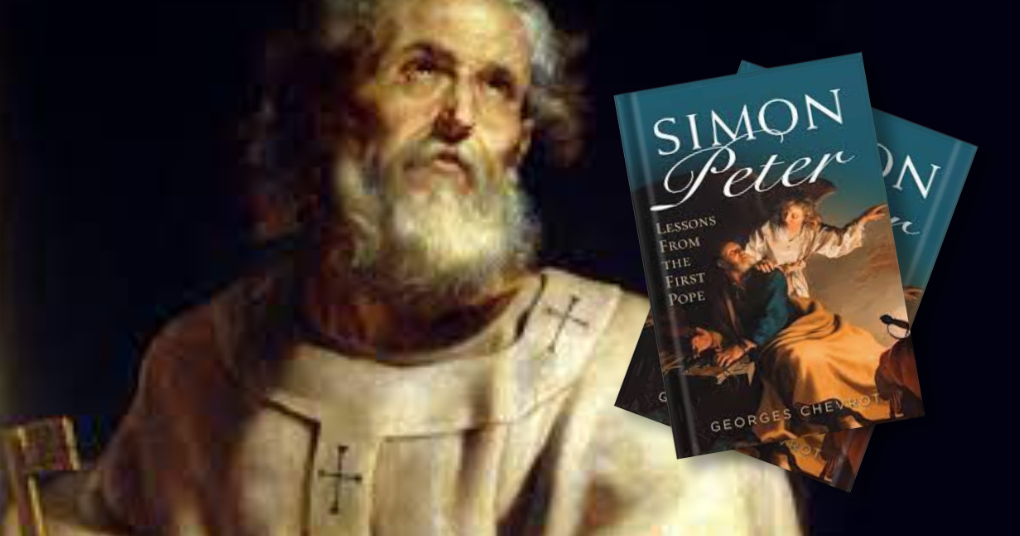Simon Peter: Lessons from the First Pope
George Chevrot
Scepter Publishers
2021
104 pages
Scepter Publishers, New York have reissued a number of Fr Chevrot’s works in abridged and very easy to read format, and I hope to review some of them in the next few months. With the feast of St Peter’s Chair on February 22 approaching, it seems most appropriate to start with his very insightful book about the first pope.
In its very first edition in French the book was in fact a compendium of twenty-four sermons – short pithy ones at that, but full of supernatural wisdom given in a very down to earth manner. The author takes several scenes in the Gospels where Peter and Jesus interact with each other, analyses the Gospel narrative and draws practical conclusion for the reader. Interestingly, although the book was written in 1937 long before Vatican II and its emphasis on the universal call to holiness, one feels that Chevrot’s writing is aimed with the laity in mind.
In the first chapter he deals with the vocation of Peter, who had been introduced to Jesus by his brother Andrew. Not only does Jesus call Peter to a completely new life, he also gives him a new name, Cephas meaning Rock. Of course Peter doesn’t become that Rock instantly. His commitment matures gradually through various ups and downs. Similarly with us: our vocation as baptised Christians is to be co-heirs of Christ, collaborators with God, both in our personal lives and in our surrounding influence. In the second chapter, the author takes us into the beautiful early morning scene where the disciples emerge from a fruitless night’s fishing to meet Jesus on the shore of Lake Gennesaret. He asks Peter to row out into the deep (Duc in altum) and cast the nets in broad daylight – a crazy idea surely. What would a carpenter from Nazareth know about fishing? But Peter does as Jesus asks and we know the rest. Fr Chevrot applies the idea of the Duc in Altum to our beginning again, facing up to contradictions, both for individuals and for the Church as a whole, knowing that the indispensable but sure condition for progress is that God be there at the beginning, middle and end. We are on the true road to holiness if we wish to obey God only and to fight against our natural imperfections because they sadden the Holy Spirit.
Continuing the same approach, the ensuing chapters take part of a dialogue between Jesus and Peter or an event involving both and comments on their relevance to Peter and then their lessons for us. The chapter on Peter’s clear declaration “Lord to whom should we go?” when Jesus asks would they follow the others who abandoned Jesus after the discourse on the Eucharist is followed by one dealing with the aftermath of Jesus walking on the water where Peter allowed doubt to overtake him and needs Jesus to help him from sinking. Both scenes give the author the opportunity to emphasise that we need a total unhesitating faith in Christ’s divinity.
Chapter 15 reflects on Peter’s extraordinary generosity – he declares after the Last Supper how he is prepared to lay down his life for Jesus – and how on the other hand he denies Jesus three times later that evening. As Chevrot says he was strong enough to let himself be killed but not enough to be ridiculed. Chevrot writes about how these scenes challenge us in our quest for holiness. In words akin to those spoken in later decades by St Josemaría Escrivá, he writes: “[W]e can make ourselves holy in every situation in which God places us, and therefore we can do so in family life, in our office, or workplace.”
Other themes that Chevrot brings out by relating to instances involving Peter and Jesus include the nature of vocation, faith in Christ’s divinity, the promise that the Church will last forever, obedience to the Pope as head of the Church and Christ’s prayer for sinners. In the penultimate chapter he deals with Peter’s three replies to Our Lord’s asking him does he love Him more than the others, and in the final chapter, taking his cue from Jesus forecasting how another will gird him and carry him where he would not wish to go, Chevrot spells out how we must follow the Church no matter what happens. We should not “give in to anguish and worry. Let us stretch out our hands to Christ to receive the task given to us day after day. Let us receive it with trust, let us perform it with courage. By following him we will win over others , and we will save ourselves, having shared in the salvation of the world.”
Although originally published eighty-five years ago, this book has a message for all ages. I recommend it unhesitatingly.
About the Author: Pat Hanratty
Pat Hanratty taught Science/Chemistry in Tallaght Community School from its inception in 1972 until he retired in 2010. He was the school’s first Transition Year Co-ordinator and for four years he had the role of home School Community Liaison Officer.

